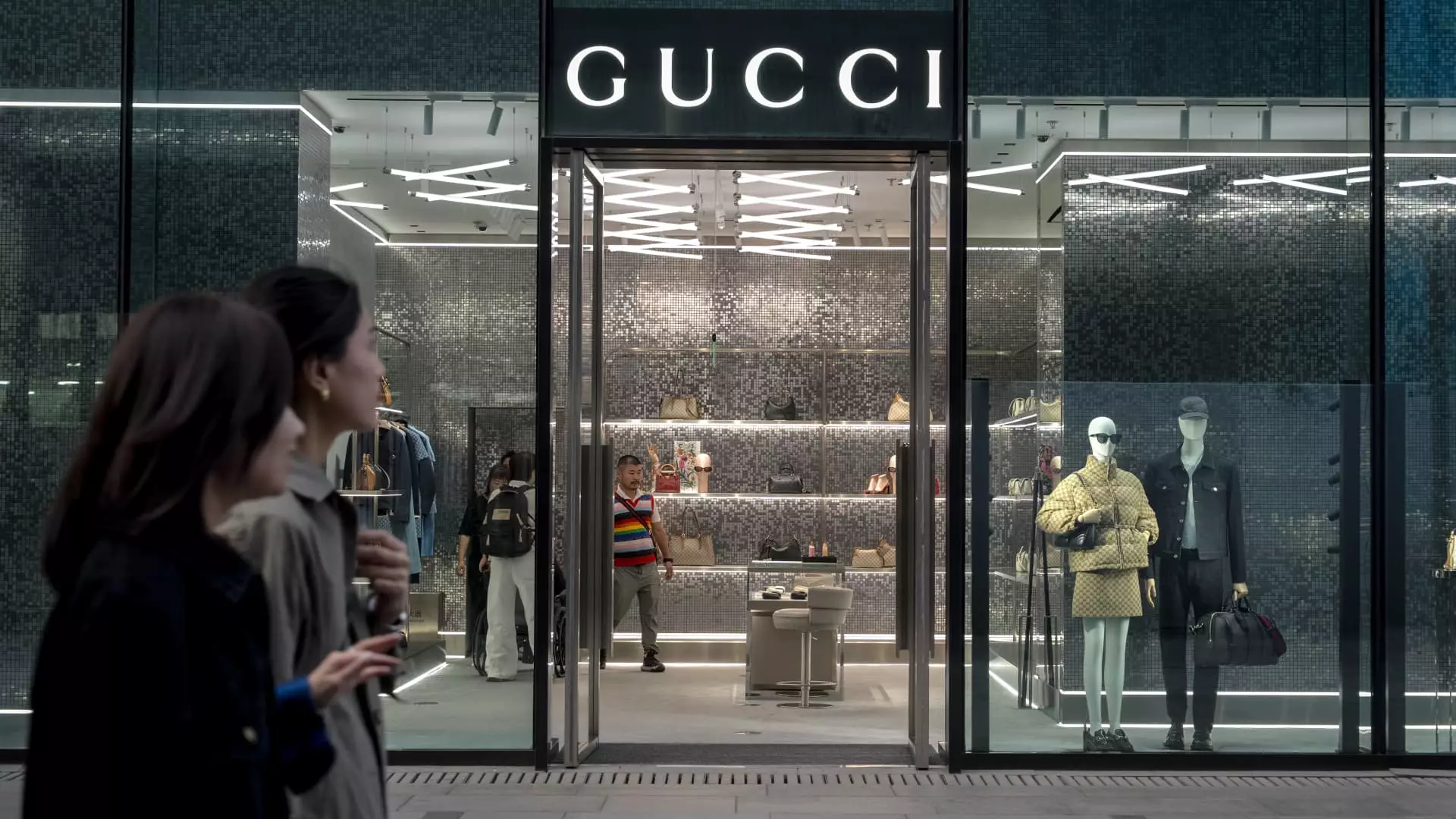The luxury fashion industry, notorious for its fluctuating fortunes, has seen a tumultuous year, and Kering, a key player in this field, is no exception. As the firm recently announced its fourth-quarter and full-year results, a closer examination reveals a struggle to maintain its former glory, especially with its flagship brand, Gucci, facing significant challenges. This article provides a comprehensive analysis of Kering’s financial performance, the underlying dynamics within the luxury sector, and the strategic responses it is implementing in hopes of revitalization.
Kering’s fourth-quarter report marked a notable decline, with revenues decreasing by 12% year-on-year, tallying up to 4.39 billion euros. While this figure just surpassed analyst expectations of 4.29 billion euros, it underlines the prevailing difficulties the group faces. A significant factor in this downturn is the staggering 24% decrease in Gucci’s sales, which plummeted to 1.92 billion euros. For a brand that once represented the zenith of luxury, this drop is striking, intensifying the already pervasive concerns surrounding its market appeal and sustainability.
Additionally, the overall annual sales contracted by 12%, resulting in a total of 17.19 billion euros—an outcome slightly better than the anticipated 17.09 billion euros, albeit still a stark contrast to the previous year’s successes. Kering’s operating income also reflected this adverse climate, nearly halving from 4.75 billion euros in the prior year to 2.55 billion euros—an alarming indicator for stakeholders and investors, signaling a need for urgent internal re-evaluation.
In his commentary, chairman and CEO François-Henri Pinault acknowledged the tough journey ahead while expressing optimism for recovery. He emphasized a transformative approach to brand management, suggesting that Kering is actively rethinking its strategies to boost the “health and desirability” of its offerings. Nonetheless, this levity casts a shadow of uncertainty over how these transformations will take shape, especially with Gucci facing such dire circumstances.
The company’s recent announcement regarding the departure of Gucci’s design chief, Sabato De Sarno, opens a new chapter of speculation about the future direction of the brand. As the curtain falls on De Sarno’s brief tenure, expectations are mounting for a creative shift that might reinvigorate Gucci’s image. Having replaced Alessandro Michele, who was initially viewed as a creative genius, the significance of this change cannot be understated. The intricacies of high fashion make it challenging to forecast whether a new name will successfully capture the public’s imagination.
Kering’s tribulations are not occurring in isolation but rather within a broader context of a luxury market that is struggling with similar challenges. The downturn in consumer spending, particularly from the coveted Chinese market, has been a dampening force for many brands. Even high-profile competitors such as LVMH have reported lukewarm results, highlighting concerns about market saturation and evolving consumer preferences.
The luxury sector appears to be at a crossroad, grappling with the unpredictable fluctuations of consumer behavior. While certain brands like Richemont’s Cartier have been able to maintain robust sales, the similarities in Kering’s position starkly contrast with the successes of more resilient players in the sector. Analysts are cautious, indicating that Kering’s ties to affluent yet fickle consumers will require both immediate and innovative strategies to reengage shoppers.
As Kering reassesses and recalibrates its focus, analysts like Simone Ragazzi express a tempered optimism regarding the potential for a brand reset with the new leadership in Gucci. Nevertheless, the ingrained issues that have plagued the label necessitate that any strategy must be both nuanced and well-executed to foster lasting change. Investors appear hopeful yet wary, recognizing that high fashion brands thrive on being perennially “in vogue.”
Despite the current struggles, Kering is not without assets. The slight rebound in sales across brands like Yves Saint Laurent and Bottega Veneta presents underlying opportunities to leverage strengths, diversify appeal, and reclaim lost market share. According to financial experts, the incremental improvements projected for 2024 indicate that while the path to recovery may be arduous, it’s not out of reach.
Kering stands at a pivotal junction where the decisions made today will define its trajectory in the luxury fashion landscape. The balancing act between managing its heritage brands and appealing to a new generation of consumers will require innovative thinking, creativity, and a strategic mindset. The journey to revival may be fraught with challenges, but industry signs suggest that adaptation toward consumer desires will be key to Kering’s long-term success.

Leave a Reply